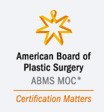

The concept of a tummy tuck seems simple enough, and many find the idea of a surgical procedure that can create a beautiful, taut tummy by tightening weakened abdominal muscles and removing excess skin and tissue attractive. The fact that the American Society of Plastic Surgeons identified the tummy tuck, which is more formally known as an abdominoplasty, as the fifth most popular cosmetic surgical procedure in 2015 offers ample proof of the procedure’s appeal.
People researching this plastic surgery procedure are liable to find themselves dealing with information overload. Wading through an assortment of buzzwords like classic, hybrid, circumferential and fleur de lis can make understanding this complex topic confusing, and separating fact, fiction and opinion can be difficult. Hopefully, examining some common myths about abdominoplasties will offer welcome insight that potential patients will appreciate.
Myth 1: A tummy tuck is a one-size-fits-all procedure.
Reality: Tummy tucks are as unique as the patients who undergo them.
When planning this cosmetic surgery procedure, doctors assess the patient’s goals and anatomy carefully. They use this information to create a customized plan that is expertly designed to deliver the best possible results for that particular patient. This personalization is actually part of the reason that there are so many buzzwords associated with tummy tucks; many of the terms refer to variations of the procedure. In addition, it is vital that the impact of anatomy be considered. An experienced plastic surgeon will be able to discuss a patient’s goals, conduct a physical examination, and provide invaluable insight into what is possible given the individual’s unique anatomy and body characteristics.
There are three main types of tummy tucks:
- A full tummy tuck is used when the patient wants to address the area above and below the belly button. Also called a traditional tummy tuck, this procedure allows the plastic surgeon to tighten weak muscles and remove excess skin via an incision between the hipbones; a second incision around the belly button allows it to be placed properly on the recontoured abdomen.
- A mini tummy tuck eliminates stubborn sagging in the lower abdomen. Here, the plastic surgeon tightens the region between the belly button and the mons pubis through a shorter incision.
- An extended tummy tuck is a more extensive surgical procedure that addresses problem tissue on the upper and lower belly, the hips, and the sides of the lower back. In order to access a wider area, the plastic surgeon works through a horizontal incision that stretches beyond the hipbones and possibly a vertical incision on the abdomen.
Myth 2: Tummy tucks are a form of cheating because people can get the same results with exercise and a healthy diet.
Reality: Tummy tucks tackle problems that no amount of dieting or exercising can fix.
While eating right and working out can often help a person look and feel better, they cannot eliminate the significant amounts of loose skin and tissue left hanging after a major weight loss or a pregnancy. A tummy tuck is designed to address these areas. During an abdominoplasty, a plastic surgeon removes excess skin and tissue and contours the abdominal area, the goal being to create a flatter, more youthful appearance.
Myth 3: Tummy tucks are a great way to jump-start weight loss.
Reality: A tummy tuck is not a weight-loss tool.
Plastic surgeons actually recommend that anyone who intends to lose weight do so before scheduling an abdominoplasty. If the unwanted pounds are shed first, the tummy tuck can address any resulting saggy skin, smoothing the abdomen and helping a patient to celebrate their achievement and feel more confident in their new, trimmer body.
Myth 4: Tummy tucks are for young moms.
Reality: Tummy tucks are for healthy people who want a tighter midsection.
While tummy tucks are often thought of as a way for women to regain their figures after pregnancy, these procedures appeal to a much wider audience. After all, as people age, the metabolism slows and the skin loses elasticity, making it harder to stay trim. Tummy tuck surgery can be the perfect solution for an older adult who wants a firmer belly. In addition, an adult of any age or gender who has lost a great deal of weight may find a tummy tuck beneficial since abdominoplasty is an effective way to remove the excess skin and tissue that is left behind after a major weight loss.
A good candidate for a tummy tuck is a person who:
- Is unhappy with the way their stomach area looks
- Enjoys good physical health
- Maintains a stable weight
- Does not smoke
- Has reasonable expectations
Myth 5: Mixing a tummy tuck with liposuction is dangerous.
Reality: Liposuction is often combined with a tummy tuck.
In their quest to provide safe, high-quality results for their patients, many experienced plastic surgeons regularly perform both liposuction and a tummy tuck. While care must be taken to protect the blood supply in the abdomen so that the area will heal properly, liposuction is an excellent tool for removing fat deposits as plastic surgeons improve the contours of the midsection during a tummy tuck. How can a patient be confident that liposuction will be used appropriately during a tummy tuck? Select a reputable board-certified plastic surgeon. These highly qualified professionals have the extensive training necessary to provide patients with a safe, effective cosmetic surgery experience.
Tummy tucks can provide lasting and dramatic results in many cases. According to a 2012 study that appeared in the journal, Plastic and Reconstructive Surgery, patients who had an abdominoplasty scored their cosmetic outcome at 9 out of 10. The same study also found that patients who had a tummy tuck with liposuction had a satisfaction rate of 99 percent. Anyone hoping to experience the same level of satisfaction should consider scheduling a consultation with a plastic surgeon.
Related Topics:















